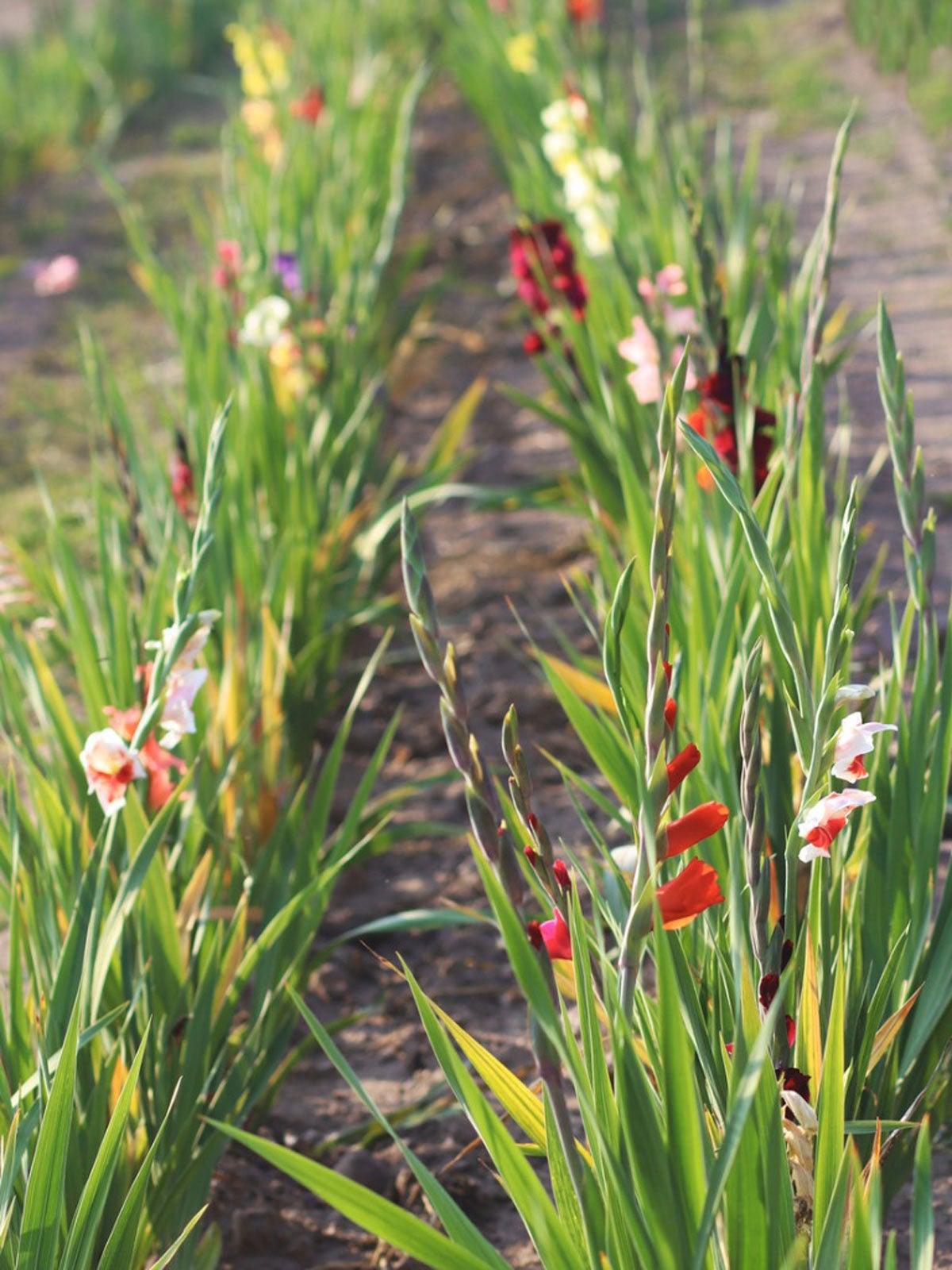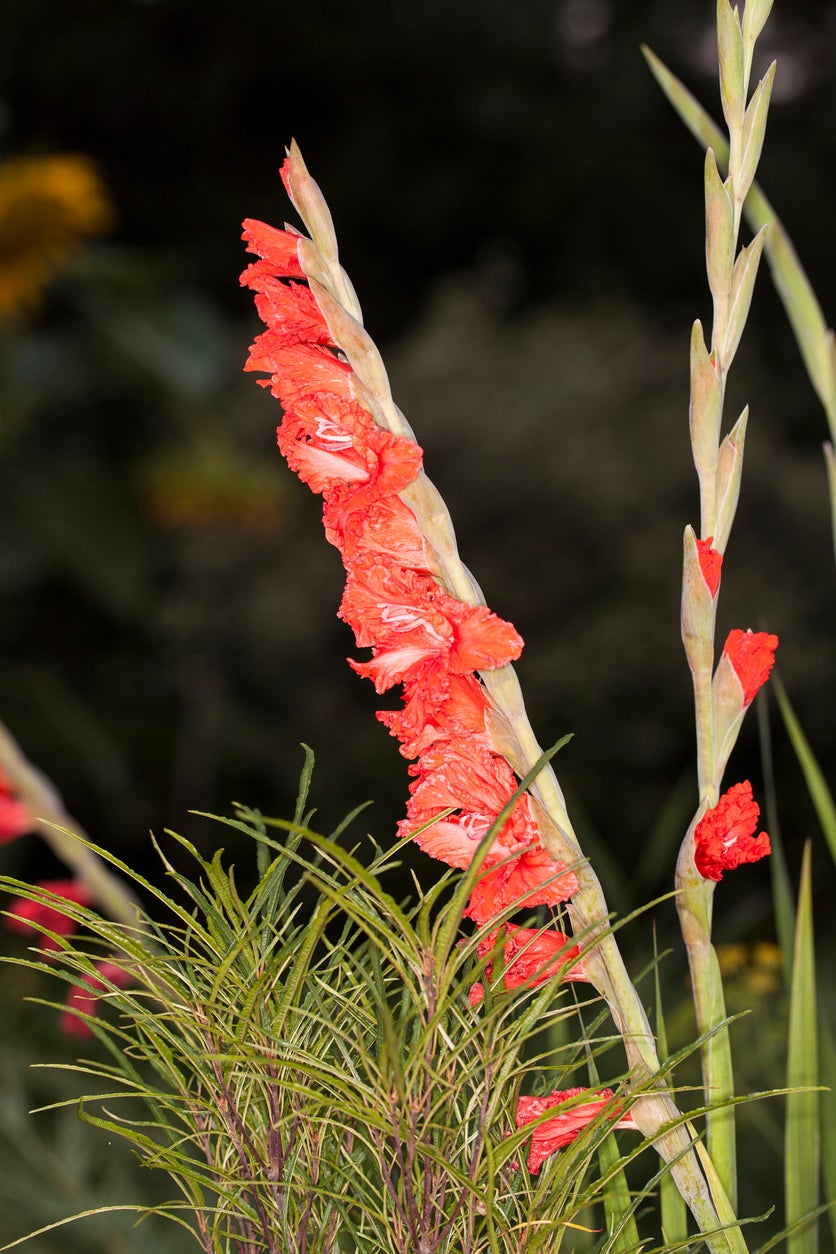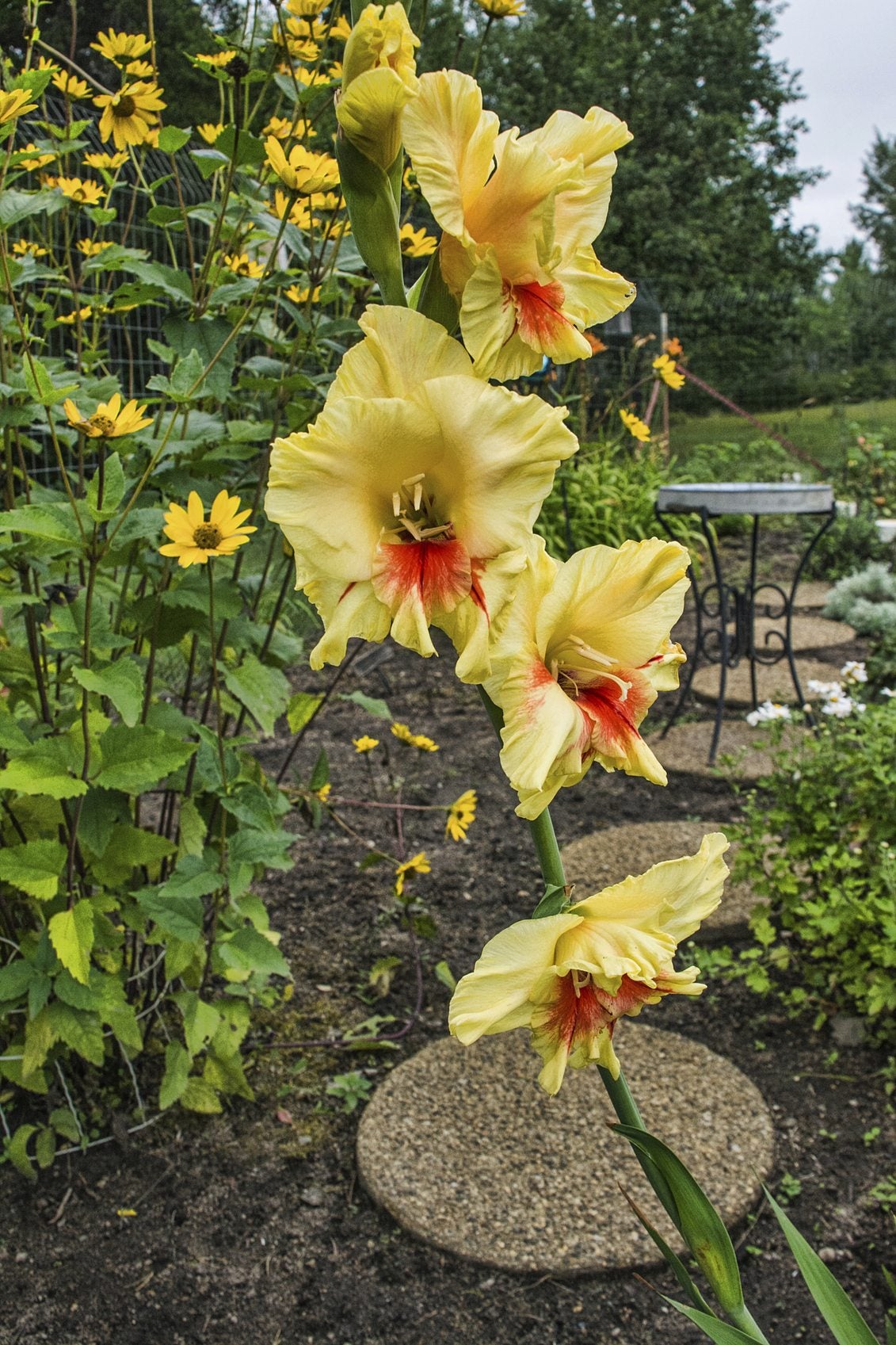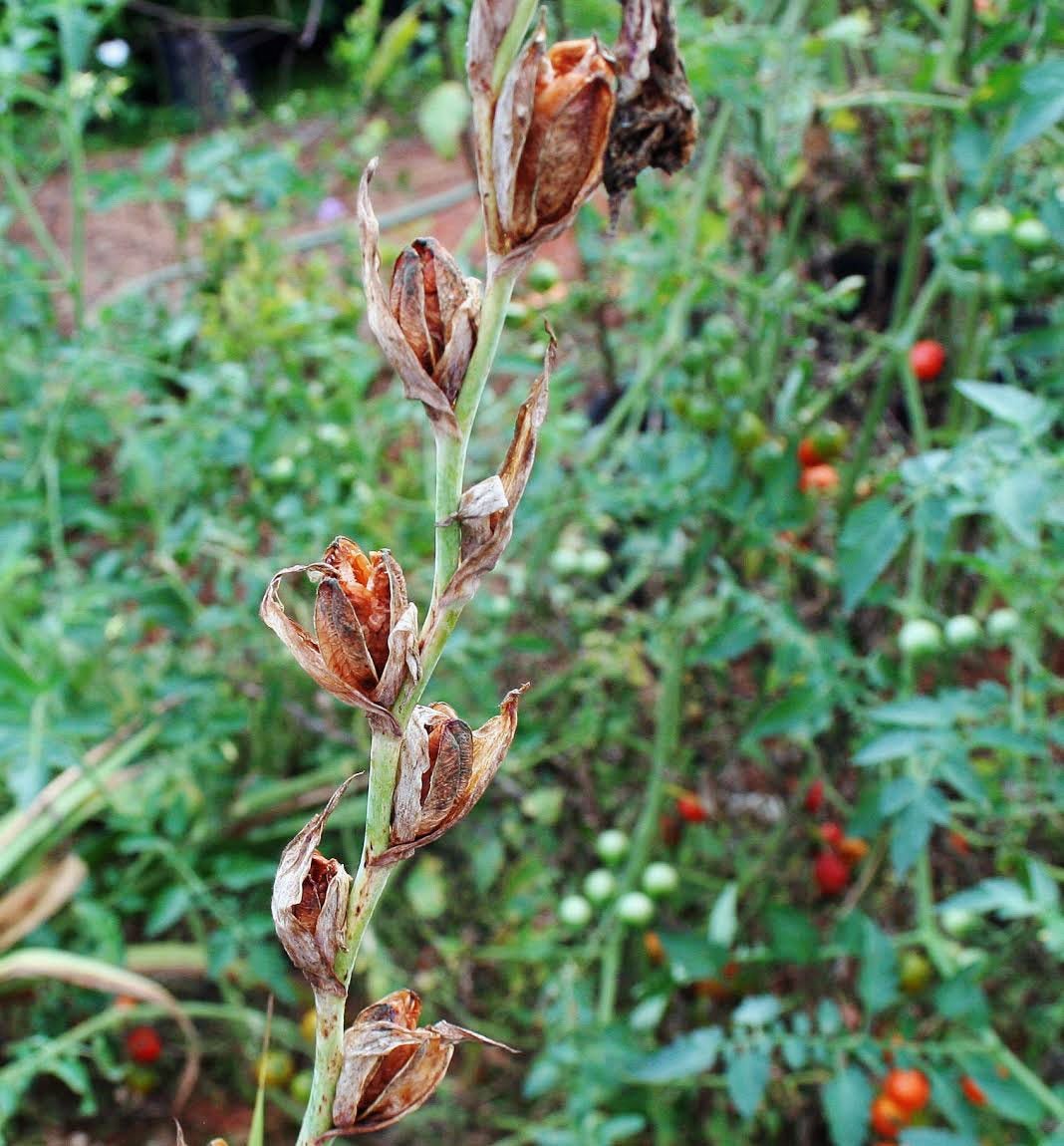Botrytis On Gladiolus Plants: How To Control Gladiolus Botrytis Blight


Related to irises and sometimes called ‘sword lily’ for its spikes of blooms, gladiolus is a pretty, striking perennial flower that brightens many beds. Unfortunately, there are some diseases that can strike these plants and destroy them for a season.
Gladiolus botrytis diseases are not uncommon, so knowing the signs and how to manage them is vital to your plants.
Identifying Botrytis on Gladiolus
Botrytis is a fungal infection caused by Botrytis gladiolorum. The infection is also called neck rot or corm disease. The fungus infects and damages leaf, flower, and corm tissue. The corm is the tuber-like storage organ of the roots of the plant.
Above the soil you’ll probably first see glads with botrytis by noticing spots on the leaves and stems. Leaf spots caused by botrytis may be small, round, and rusty red. They may be yellow to brown or the spots can be larger, more oval in shape, and with a red brown margin. Look also for rot at the neck of the plant stem, just above the soil.
The flowers will first show signs of infection with water-soaked spots on the petals. Decline is rapid in the flowers and these spots will quickly transform into a slimy, moist mess with grayish fungal growth.
The corm, which is under the soil, will rot with botrytis infection. It will become soft and spongy and grow black sclerotia, the body of the fungus.
How to Control Gladiolus Botrytis Blight
Botrytis blight affects gladiolus around the world, wherever it is cultivated. When planting this flower, use corms that have been pre-treated to prevent getting the disease in your soil.
Gardening tips, videos, info and more delivered right to your inbox!
Sign up for the Gardening Know How newsletter today and receive a free copy of our e-book "How to Grow Delicious Tomatoes".
If you do have the disease in your garden, it will spread through infected corms and decayed plant matter. Destroy all affected plant material.
If you haven’t been able to prevent gladiolus botrytis diseases in your plants, treating gladiolus botrytis requires the use of fungicides. Your local extension office can help you choose and learn how to use the right fungicide. Generally, botrytis can be managed with chlorothalonil, iprodione, thiophanate-methyl, and mancozeb.

Mary Ellen Ellis has been gardening for over 20 years. With degrees in Chemistry and Biology, Mary Ellen's specialties are flowers, native plants, and herbs.
-
 12 Lush Alternatives To A Lawn For Sustainable Spaces
12 Lush Alternatives To A Lawn For Sustainable SpacesAlternatives to a lawn are beautiful and also beneficial to your local ecosystem and its pollinators. Explore our top picks for plants to replace grass.
By Tonya Barnett
-
 Types Of Tomatoes Explained: Explore The Many Wonderful Shapes, Colors, Flavors, & Best Uses
Types Of Tomatoes Explained: Explore The Many Wonderful Shapes, Colors, Flavors, & Best UsesThe world of tomato varieties is vast and fascinating. Learn about the key types to grow in your garden, tailored to your preferences and space.
By Amy Grant
-
 Gladiolus Plants With Scab – Controlling Gladiolus Scab On Corms
Gladiolus Plants With Scab – Controlling Gladiolus Scab On CormsIf you are growing gladioli, you’ll want to know about gladiolus scab. For more information and tips on prevention and control, click here.
By Teo Spengler
-
Gladioli Mosaic Virus – Managing Symptoms Of Gladiolus Mosaic
Gladiolus blooms are featured in many cutting gardens for mid-summer bouquets. When issues like mosaic occur, this can naturally be alarming. Good cultural control can help prevent mosaic virus in gladiolus. Learn more in this article.
By Susan Albert
-
Treating Glads With Fusarium: How To Control Gladiolus Fusarium Rot
If the corms of your unplanted glads appear discolored and unhealthy, they may be infected with gladiolus fusarium rot. Learn more about fusarium wilt and rot on gladiolus plants in this article to see if your corms can be saved.
By Becca Badgett
-
Gladiolus Leaf Diseases: What Causes Leaf Spots On Gladiolus Plants
When kept healthy and disease free, gladiolus plants will return year after year. Issues like gladiolus leaf spot, however, may cause decline of your plants. Becoming familiar with the signs of gladiolus leaf diseases is important in preventing spread. Learn more here.
By Tonya Barnett
-
 Is Your Gladiolus Falling Over – How To Stake Glads In The Garden
Is Your Gladiolus Falling Over – How To Stake Glads In The GardenGrowing glads is so simple, but sometimes the tall gladiolus falling over in the garden can be troublesome, if not unattractive. Luckily, with a little added support, this can be easily remedied. Click this article for additional information.
By Mary H. Dyer
-
 Gladiolus Are Falling Over – Learn About Staking Gladiolus Plants
Gladiolus Are Falling Over – Learn About Staking Gladiolus PlantsProlific bloomers they are, but gladiolus plants falling over is not uncommon. Staking gladiolus plants will keep their brightly colored heads from dipping or breaking, and there are any number of items that can be used as gladiolus plant stakes. Learn more here.
By Amy Grant
-
 Companion Planting With Gladiolus: Plants That Grow Well With Gladiolus
Companion Planting With Gladiolus: Plants That Grow Well With GladiolusAs well as bouquets, gladiolus looks amazing in flower beds and along garden borders. But what are some good companion plants for gladiolus? Click this article to learn more about plants that grow well with gladiolus.
By Liz Baessler
-
 Gladiolus Seed Pods: Harvesting Gladiolus Seeds For Planting
Gladiolus Seed Pods: Harvesting Gladiolus Seeds For PlantingYou can try saving gladiolus seeds to preserve a favorite variety and share it with other gardeners. It's easy to do, but the flowers are a long time coming. This article will provide more information about harvesting these pods on gladiolus.
By Bonnie L. Grant